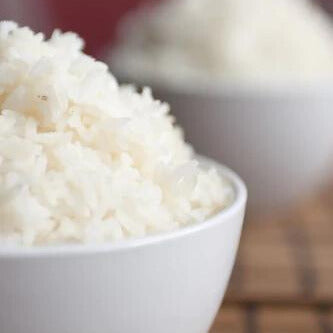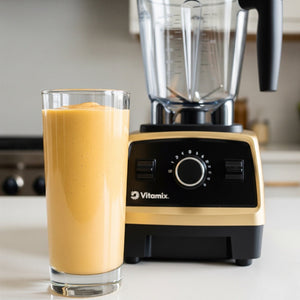If you've read my Body Love Books, you'll know that most of my recipes contain little to no carbohydrates and I am often asked -- how can I still enjoy rice bowls?
I never want you to have give up foods you love, but we can look at how were serving these foods to have a minimize the impact it will have on blood sugar and our overall health. So if you are a fan of making rice bowls at home, here are three tips to improve the macronutrient profile and increase the nutrient density of your rice bowls!
Tip #1: Lower the Glycemic Index of Rice
Grains are notoriously high in carbohydrates and it’s easy to serve up a lot with little nutrients. The first thing we want to look at is the quantity of rice (or any carbohydrates) we are including on our plate. To keep blood sugar levels stable, I recommend 1/4 cup of complex carbohydrates paired with protein, healthy fats, and fiber to slow the absorption of glucose to the blood stream.
Another way we can lower the glycemic index of our rice bowls while increasing the amount of rice we're eating is by adding in cauliflower rice to the mix! Cauliflower rice is a fiber-rich alternative that has lower net carbohdyrates and lower carbohydrate density than white or brown rice. Cauliflower is a cruciferous vegetable and a good source of sulforaphane, a phytochemical that activates genes responsible for detoxification, reducing inflammations, and cell defense. It's easy to purchase cauliflower rice premade in the freezer department of your grocery store and cook it according to the instructions on the bag. You can also make it at home by pulsing raw cauliflower florets in a food processor until a rice-like size is reached.
If you love rice and want to keep the glycemic index low, try this hack -- grab a bag of cauliflower rice and go 50/50 white rice with cauliflower rice. By mixing in cauliflower rice your increasing NRF2 activating antioxidants, increasing fiber, and loading you and your kids with so many vitamins! Drizzle with a little olive oil, grass-fed butter or add avocado and all you need is a protein topper and you have a balanced Fab 4 bowl - even if it’s all your kiddo eats at least they got the fat, fiber and veggies. It’s admittedly easier to start when you first start serving your kids real food but if you want to get going just add a 1/4-1/3 cup working your way up to a 50/50 split. Now it’s a habit and it’s just the way we do it in our home. No fighting over eating the side of veggies, and my kids love these bowls.
Tip #2: Swap Water for Bone Broth
If you grew up on buttery chicken flavored rice like I did, this hack will be a game changer! Not only will it add a ton of flavor (I love to use FOND's lemon garlic flavor sipping broth), but you're getting the added benefits -- collagen amino acids, vitamins and minerals like calcium, phosphorus, sodium, and magnesium, and increasing the protein content all in one. Just one serving of bone broth contains 10-16 grams of protein per serving, which will be a key player in increasing your satisfaction level after a carb-heavy dish and maintaining stable blood sugar levels.
Some of my favorite bone broths include FOND (code BEWELLBYKELLY gets you 20% off your order or 10% off your subscription monthly; check them out here), Kettle & Fire (use my link for 15% off your order), and Bonafide Provisions (for 20% off Bonafide Provisions, use code KELLY at checkout). These bone broths are delicious on their own, but also make a great addition to your meals for extra flavor, protein, and gut-loving nutrients.
Tip #3: Lower the Arsenic Levels in Your White Rice
Rice just loves heavy metals, it absorbs on average 10x as much as other grains but that doesn't mean you still can't enjoy it. Here are my top tips for limiting heavy metals and arsenic exposure from your rice.
1. Buying California grown white rice lowers heavy heavy metal exposure. White rice doesn’t contain the bran or germ which is where most heavy metals reside. A California grown variety means the rice isn’t grown on old cotton fields that once contained arsenic pesticides. If your local to California, opt for a locally source white rice brand. You can head over to Instagram to see my favorite brand.
2. The best cooking methods to help lower the arsenic levels in rice are either parboiling or pasta style. A 2020 study showed that parboiling rice removed over 50 percent of the naturally occurring arsenic in brown rice, and 74 percent in white rice. Whichever method you choose, be sure to rinse your rice thoroughly before you begin cooking.
- Parboiling:
- Bring 4 cups of water to a boil, add 1 cup of rice and boil for 5 minutes.
- Drain the water -- this step pulls out arsenic and you pour it down the drain!
- Add 2 cups of fresh water or bone broth to the pot of rice.
- Cook rice on medium low heat until liquid is absorbed.
- Pasta Style:
- You simply boil or pressure cook the rice with extra water and pour off the excess water.
So if you are a frequent rice eater, try out these cooking methods the next time you want to incorporate them into some of my Fab 4 recipes! Here's a few we love in our home:
Fab 4 Rice Bowl Recipes
Find more Fab 4 recipes and tips for blood sugar balance on Instagram @bewellbykelly or on the blog!






